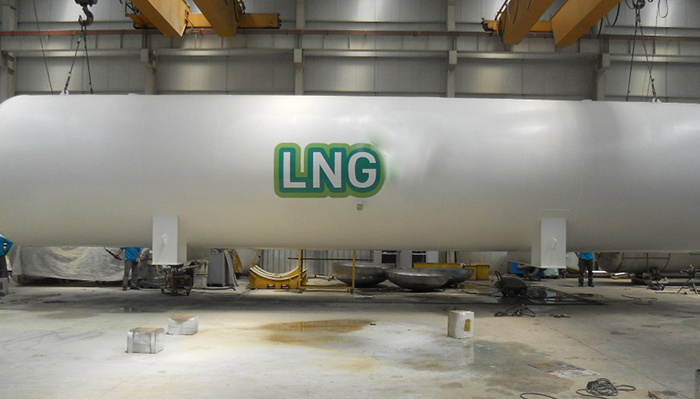Product Category
Analysis of the cold storage technology of the wall, bottom and top of the cryogenic storage tank
Date: Apr 28, 2020

Vacuum cryogenic storage tank is a common industrial equipment for storing cryogenic liquid, which plays an important role in many fields of industry, and according to the nature of the type of liquid stored in the tank, the use and maintenance methods are different, the corresponding need to pay attention The security matters also have their own characteristics.
The boiling point of LNG under normal pressure is -160 ℃. LNG chooses low-temperature and normal-pressure storage to reduce the temperature of natural gas below the boiling point, so that the operating pressure of the storage tank is slightly higher than normal pressure. Compared with the high-pressure and normal-temperature storage method, it can greatly reduce the thickness of the tank wall and improve safety performance. Therefore, LNG requires that the liquid storage tank has good low temperature resistance and excellent cold insulation performance.
The seismic requirements of general buildings are to crack without falling under the prescribed seismic load. To ensure the safety of the storage tank under unexpected loads, the storage tank needs to have good seismic performance. For LNG storage tanks, it is required not to fall or crack under the prescribed seismic load.  Therefore, the construction site chosen should generally avoid the seismic fault zone. Before construction, seismic tests should be conducted on the storage tank to analyze the structural performance of the storage tank under dynamic conditions to ensure that the tank body is not damaged under the specified seismic intensity.
Therefore, the construction site chosen should generally avoid the seismic fault zone. Before construction, seismic tests should be conducted on the storage tank to analyze the structural performance of the storage tank under dynamic conditions to ensure that the tank body is not damaged under the specified seismic intensity.
The cold-keeping state of the low-temperature storage tank needs to be analyzed from three aspects:
Tank wall insulation: polyurethane foam is sprayed on the inside of the outer tank lining. Generally, the polyurethane foam has a thermal conductivity ≤0.03 W / (m · K), a density of 40-60 kg / m3, and a thickness of about 150 mm.
Tank top insulation: The inner tank top uses a suspended rock wool insulation layer. For example, a tank top is provided with 4 layers of fiberglass insulation layer, each layer is 100 mm thick, the density of glass fiber wool is 16 kg / m3, and the thermal conductivity is 0.04 W / (m · K).
Insulation at the bottom of the tank: Insulation at the bottom of the tank is more complicated. In addition to spraying polyurethane foam under the steel plate, a waterproof structure is also required.
The boiling point of LNG under normal pressure is -160 ℃. LNG chooses low-temperature and normal-pressure storage to reduce the temperature of natural gas below the boiling point, so that the operating pressure of the storage tank is slightly higher than normal pressure. Compared with the high-pressure and normal-temperature storage method, it can greatly reduce the thickness of the tank wall and improve safety performance. Therefore, LNG requires that the liquid storage tank has good low temperature resistance and excellent cold insulation performance.
The seismic requirements of general buildings are to crack without falling under the prescribed seismic load. To ensure the safety of the storage tank under unexpected loads, the storage tank needs to have good seismic performance. For LNG storage tanks, it is required not to fall or crack under the prescribed seismic load.

The cold-keeping state of the low-temperature storage tank needs to be analyzed from three aspects:
Tank wall insulation: polyurethane foam is sprayed on the inside of the outer tank lining. Generally, the polyurethane foam has a thermal conductivity ≤0.03 W / (m · K), a density of 40-60 kg / m3, and a thickness of about 150 mm.
Tank top insulation: The inner tank top uses a suspended rock wool insulation layer. For example, a tank top is provided with 4 layers of fiberglass insulation layer, each layer is 100 mm thick, the density of glass fiber wool is 16 kg / m3, and the thermal conductivity is 0.04 W / (m · K).
Insulation at the bottom of the tank: Insulation at the bottom of the tank is more complicated. In addition to spraying polyurethane foam under the steel plate, a waterproof structure is also required.
Last article:
Send Your Inquiry
We not only provide a good product, but also provide high quality service. If you are interested in our products,
you can contact us in the following ways.
you can contact us in the following ways.







